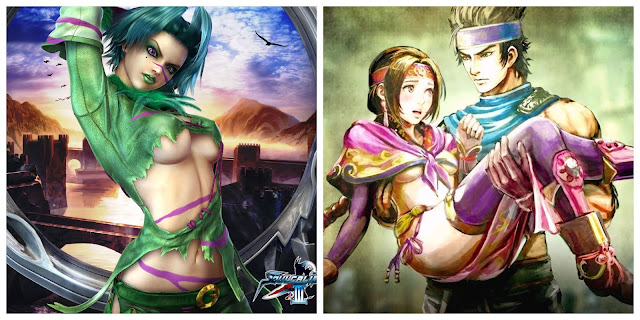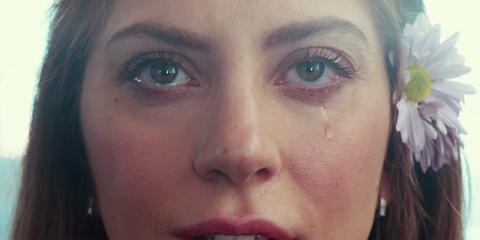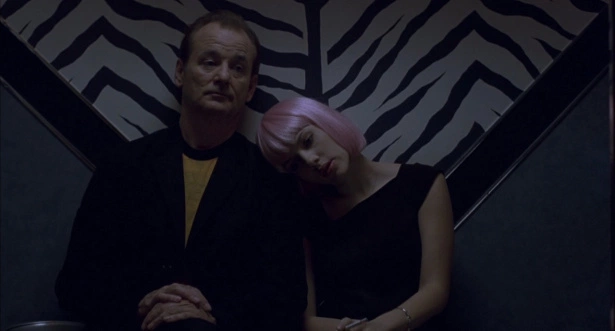Have Faith in Your Fictional Women: An Analysis of Soul Calibur's Characters
Tira and Seong-Mina in Soul Calibur. Anyone look cold here?
The conversation surrounding misogyny in video games and gaming circles has been a large talking point for the better part of a decade at the very least. When choosing who to market video games to back in the very gendered 1970s when they began to be produced for commercial use, marketing executives chose boys, excluding entire markets from a medium, and a product, that anyone can enjoy. It's a choice that has haunted the industry to this day, as more and more men show their disdain for women who play these games, whether these women play in competitive circles or for pure entertainment, gatekeeping is common in the industry and community. Women are not only discouraged from engaging with these products, but from making them as well, as development teams, from writers to programmers to directors show a clear lack of diversity on all fronts. Nowhere is this gap more felt than in the fighting game genre, as straight cis-gendered men create games that include copious amounts of sex appeal to grab the attention of other straight cis-gendered men.
Not all developers of fighting games are straight cis men, and not all of the players are other straight cis men, but it's very clear that it is a genre meant to cater to this demographic by stripping its fictional women of agency (and their clothes) to make a product that clearly asks women to stay away. When you think of Kitana or Jade from Mortal Kombat, do you think of their stories or their personalities, or do you immediately think of their clothes? Cammy from Street Fighter has a life, a job, a backstory, a personality and a wicked fighting style, but do you think of all of that first, or how men fawn over her revealing costume and (pardon my language) giant ass? Fighting games don't need stories for their characters necessarily, but when developers work hard to create men with interesting tales and women with interesting anatomical structures suspicion sneaks in. Skullgirls, a game with a cast of nearly all women, spends half of its time making each of these characters interesting and dynamic, and the other half making jiggle physics for underaged and of age girls, none of whom have the agency to choose what they wear and how they are presented. Their stories are rich, their fighting styles ae dynamic, their bodies make no sense, and they seem to make faces that display sexual pleasure rather than pain when attacked. It's a fun game, but was it made to spotlight the importance of women in video games, or was it made to indulge in sexual fantasies?
A game series that has always had this problem to me is Soul Calibur, a series that I love to death and was my first experience with fighting games as a child. When we got our hands on Soul Calibur 2 for the GameCube, it was sometimes all me and my siblings would play; we were enthralled with the graphics, the fighting, the Link from Legend of Zelda apparence, and I was enchanted by the women. Each of the women in this game were magical to me, other worldly beauties that kicked serious ass and were incredibly distinct and diverse. From Japan to Greece to Southern Asia to England to China I was enamored by the diversity of women in the game, something I had never truly seen. What's more, I cared very deeply about their stories, which could be read in the gallery, and how each of them was lead on their current paths; it was exciting to be introduced to storytelling like this when most games I had seen before were about collecting all the objects to win. But as I look back on my love and nostalgia, I realize that I had been completely desensitized over the years as to how these women were portrayed. Soul Calibur 6 was just released in October of 2018, but as I was happy to see the series return, each time a woman fighter was revealed I was excited, and then immediately embarrassed.
Each woman's trailer was created in an effort to make them look fun to play as, and though each trailer succeeded on this front, I noticed that they all looked a little different than the last time they were seen, and it wasn't all for the better. The last time the character Ivy was seen was the previous installment in 2012, she was nearing her fifties, and looked quite toned down from previous games. Her proportions were still laughably unnatural and she was still considered the series' "sex symbol" (really), but she was, well, covered up more. It was as if the designers realized that an English woman from the 1500s wouldn't wear leather belts as an outfit, especially if she is the aristocrat and heir to a family fortune. It was refreshing to see, that previous alternate costumes of Ivy where she wore puffed collared shirts and royal colors was combined with her trademark leather to make something new but still recognizable. All of that was thrown out the window for the next installment, however, making Ivy and the rest of the cast younger and giving her the absolute worst and most nonsensical look she has ever had. Thumbnails of her reveal trailer made me ashamed to even like her, but then I got to asking, why do I even like her in the first place?
This regression in design for Ivy from Soul Calibur 5 to 6 is so disappointing
The answer is actually simpler than you might expect: she has an engaging personality and each game continues her growth and her own plot. Ivy began the series trying to achieve the sword Soul Edge in an attempt to further her alchemy and avenge her father's death. But as she learned that because her birth father is the incredibly evil and honestly not likeable character Cervantes, the villain of the original game, Soul Edge was revealed to be in her bloodstream, and now she vows to destroy it and kill Cervantes. She is a character that has always been marketed as a villain despite the fact that she is one of the most neutral characters in the series. In her ending for Soul Calibur 4, she destroys Soul Edge, which leads to her own demise because of its presence in her. Except, her sword, which she magically endowed with alchemy, refuses to let her embrace death, a powerful moment for a game series that has the primary goal of beating other people up. In short, she's well-written, but from an outside perspective, you would never know, and you wouldn't care, because the way she looks really says it all about how the developers really feel.
Another character from the series with a design that clearly screams "we want to sell copies so make her breasts way too large" is Taki, a ninja that has been a character since the beginning of the series. Taki has a long and complicated history surrounding her clan, demon hunting, searching for Soul Edge (every character does this, not too sure why they don't work together), a rivalry with the resident samurai Mitsurugi, and even a motherly relationship with the ninja that replaced her in Soul Calibur 5. There's betrayal, honor, demons, and a sense of purpose as Taki loses her master to demonic forces and decides to rid the world of these creatures for good. She has lived an extensive life, and even her arrogant nature in battle is a refreshing characteristic to see. She has always been caring, however, shown when she saved another character, Sophitia, after the latter destroyed half of Soul Edge and nearly faced death from the shards of the sword entering her body (yes, that's right, another woman was responsible for the evil sword's defeat, but not many seem to remember her when they could remember the underdressed, Harley Quinn-like Tira). Taki has always been my favorite character not only to play as but to watch grow, which is such a shame that she was designed in this way.
Taki always wears a skintight red (occasionally blue) suit that covers her neck to toe, but that skintight aspect is kind of an issue. Taki in Soul Edge (the game) and the first Soul Calibur looks pretty average, save for a small hole to reveal cleavage. But after that, as several commenters on YouTube noticed, her breasts became larger than her head. Her abs began to peak out through the costume, and so did her nipples, as early as in Soul Calibur 2, and suddenly that was what mattered. Taki became the poster-girl for everything wrong with women in video games, she is now a "tit ninja" to quote H. Bomberguy in his video "Power Fantasy, Male Objectification and Lady-Fanservice," instead of the fiercely competitive and protective character she was before. It's utterly shameful, and it just continues in Soul Calibur 6, with her nipples and abs as prominent as ever, and her face whitewashed into oblivion to give her a more big-eyed, anime-esque look.
Why can I see Taki's belly-button? And her nipples?
The same happened with nearly every woman in the game and there aren't that many. Seong Mina, a character that is supposed to be a young woman, has massive amounts of "underboob" (pictured above) when the last time she was seen she was nearly completely covered. Talim became much lighter than her previous apparences, erasing her heritage, and suddenly she had "underboob" too, and she's about 15! Sophitia now has a dress with a top held together by string, which just reveals large breasts that she hadn't really had before Soul Calibur 4, her last appearance. Tira has an outfit much more inspired by her Soul Calibur 3 design (pictured above), giving her the more revealing look of the past because it is "story accurate." Xianghua was the most saved during this redesign overhaul, but, like each installment before it, Soul Calibur 6 gave her incredibly noticeable jiggling breasts, despite the fact that she barely has any. Each of these women have wonderful stories, interesting weapons, fascinating personalities, and great arcs, but those are instantly forgotten and abandoned when one looks at their outfits.
Why do the developers think these are the right choices? I would say tradition, but Mortal Kombat, after using sex appeal to regain an audience for Mortal Kombat 9, threw away the sexist and nearly nonexistent costumes of the past with much more restrained looks for their characters in Mortal Kombat X and for seemingly Mortal Kombat 11, which just revealed restrained looks for two women fighters who in the past would never cover themselves up. If it can be done by these developers, then what makes it so difficult for the makers of Soul Calibur? If I had to guess, it would be a fear of low sales. Soul Calibur 6 was given a limited budget and a short development time, and was said to be the last in the series unless it sold extremely well, and the fastest way to lose your male-dominated audience is to design your women with outfits that don't feel exploitative. The utter outrage sparked by Mortal Kombat 11 revealing a new design for the character Scarlet is very clearly poorly disguised misogyny, and the same can be said for the outrage against Lady's face, which was apparently not feminine enough for men, in Devil May Cry 5, another game that is also not out yet but has already lost buyers on the simple idea that women are allowed to look average.
I'm not saying skimpy or revealing outfits are the sole problem, because they're really not. It is intent, it is knowing that fictional characters have no agency over what they wear, and deciding that they are object that are inherently valued for their sex appeal than for any writing one can give them. Developers are afraid of losing their jobs because a game didn't sell an unrealistic amount of copies, so the idea of catering to fantasies might not seem like the worst idea. Sex sells, whether we want it to or not, and the fact that developers are now starting to reject this idea and are creating women with far more realistic designs, only staves off the men you really don't want playing video games anyway. Developers that continue to cater to toxic men and the male gaze show that they have no faith in their fictional women, that they believe storytelling and good writing is only engaging if it is for men, but for women, they need more.
What I'm trying to say is, in essence, have faith in your fictional women. They are written much better than you think they are, they have more to offer than their bodies, and they can break molds and empower players just as well as the men in those same worlds. Skimpy dress is typically used on characters with either little to no personality, or on characters that actually have thoughts and feelings but we are assumed to not want to listen to them. Panty shots, oversized breasts and posteriors, nipples peeking through outfits, they are the mark of characters that their own creators do not and never have believed in. If you like to cosplay as these characters and this makes you feel empowered and free, good for you, I'm glad that these women can bring you joy. But if you're complaining that your favorite sex object of a character doesn't dress as revealing as possible anymore, or doesn't have the skull structure you would like, or doesn't have a body that makes a lot of women feel ashamed as if they are the inadequate ones, take a step back; realize that maybe developers are starting to value writing and women more, and that they're begun to realize your toxicity isn't needed anymore.
Thank you to my Patrons:
Ben Bird Person
Twitter: https://twitter.com/meganro1110
Instagram: https://www.instagram.com/meganr1110/






Comments
Post a Comment